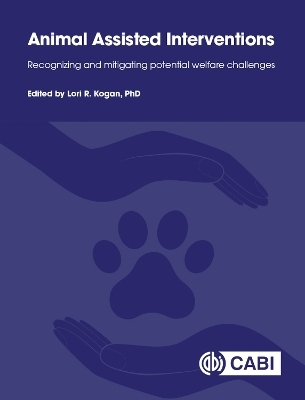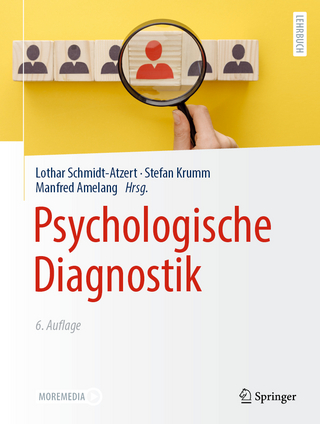
Animal-assisted Interventions
CABI Publishing (Verlag)
978-1-80062-259-3 (ISBN)
This is a practical book exploring how to conduct animal assisted intervention (AAI) in ways that protect and prioritize animal and human welfare. This resource is for social scientists (e.g., psychology, social work, human development and family studies, etc.), as well as ethologists and animal behaviour and welfare students and practitioners. The book is a series of short chapters that depict a wide array of AAIs and their potential welfare concerns. The chapters include descriptions of the AAI offered, the welfare challenges, and ways to successfully mitigate these challenges. This book also covers critical topics including therapy animals' aging, retirement, and death as well as ethical issues including animal consent. Species include not only dogs, but horses, rabbits, and other small animals (e.g., guinea pigs, mice, etc.). Types of AAI involve individual interventions as well as crisis dogs (those who help after natural and man-made disasters), and residential animals. The book is designed to be a practical, engaging book with links to video and examples of real-life situations. It is evidence-based, yet user-friendly and directly applicable to students and practitioners. This highly practical and engaging book with examples of real life situations, videos and case studies, explores how to conduct animal assisted interventions in ways that protect and prioritize animal and human welfare. The book: · Explores how to conduct animal assisted intervention (AAI) in ways that protect and prioritize animal and human welfare. · Discusses potential welfare challenges including how to advocate for the animal, animal consent, and the animal's aging, retirement, or death. · Evidence based approach to mitigating welfare concerns for a wide range of therapy animals including dogs, horses, rabbits, rodents, and exotic animals - and their recipients. An invaluable resource for ethologists and animal behaviour and welfare students and practitioners, as well as social scientists (e.g., psychology, social work, human development and family studies).
Lori Kogan, Ph.D. is a Professor of Clinical Sciences at Colorado State University. She is the Chair of the Human-Animal Interaction section of the American Psychological Association and Editor of the Human-Animal Interaction Bulletin, an open-access, online publication supported by the American Psychological Association. She has published numerous journal articles and book chapters, and co-edited books including 'Pet Loss, Grief, and Therapeutic Interventions: Practitioners Navigating the Human-Animal Bond', 'Clinician's Guide to Treating Companion Animal Issues: Addressing Human-Animal Interaction' and 'Career Paths in Human-Animal Interaction for Social and Behavioral Scientists' and given invited presentations on topics related to human animal interactions in both psychology and veterinary medicine venues. She is currently engaged in several research projects pertaining to the intersection of the human animal bond and veterinary medicine.
Section 1: Welfare Chapter 1: The importance of animal welfare in animal assisted services. Melissa Y. Winkle and Amy Johnson. Chapter 2: Standards of practice and professional competencies to protect welfare and promote thriving in AAI. Taylor Chastain Griffin. Chapter 3: Welfare and well-being considerations in dog selection and involvement in animal assisted interventions. Risë VanFleet. Chapter 4: Equine welfare in therapy and learning services: an overview. Nina Ekholm Fry. Chapter 5: Communicating with “critters” - incorporating small animals into Animal Assisted Interventions. Patti Anderson. Chapter 6: The Therapy Animal’s Bill of Rights. Ann R. Howie. Chapter 7: Trauma-informed interspecies social justice in AAI. Sarah Schlote. Section 2: Equines Chapter 8: Recognizing and mitigating potential welfare challenges during equine-assisted services for autistic youth. Caiti Peters and Temple Grandin. Chapter 9: Striking a balance between welfare and therapeutic progress in equine-assisted services. Megan French and Angela Fournier. Chapter 10: Freedom, choice, & consent in the HERD. Veronica Lac. Chapter 11: Acknowledging and mitigating professional compassion fatigue: personal reflections on animal-assisted work. Elizabeth A. Letson and Joy R. Hanson. Chapter 12: Time to say goodbye: honoring the life and death of a therapy horse. Arieahn Matamonasa-Bennett. Section 3: Crisis dogs Chapter 13: Animal assisted interventions (AAI) and the lessons learned – striving for safe, sane, and humane interactions. Susan D. Greenbaum. Chapter 14: Animal-assisted crisis response: the balance between work and welfare. Batya Gugenheim Jaffe. Chapter 15: Innovative AAI within a child trauma assessment center. Angela M. Moe. Chapter 16: Your dog to share. Darlene Blackman. Section 4: Other animals Chapter 17: Benefits and considerations when incorporating farm animals in therapeutic settings. Suzanne M. Kapral. Chapter 18: Animal assisted interventions: paths to propagation. Julie Ann Nettifee. Chapter 19: My ethical code: personal guidelines for effective welfare and safety practices in AAI. Brenda Rynders. Chapter 20: The three agendas of animal assisted therapy (AAT). Eileen Bona. Section 5: Children Chapter 21: Pawsitive reading programs. Nicky Barendrecht-Jenken and Anna van den Berg. Chapter 22: A dog’s intuition. Brittany Panus. Chapter 23: Establishing an animal-assisted therapy program at a preschool. Katrina Winsor. Chapter 24: Children interacting with dogs: challenges & rewards. Lisa-Maria Glenk. Chapter 25: Before going forward, plan backward: prioritizing welfare during HAIs. Terri Hlava. Chapter 26: Reading doesn’t have to be ruff. Jean Kirnan and Ashley Thompson. Chapter 27: Canine assisted educational activities in a university setting: reflecting on ways to promote happy and mutually beneficial experiences. Helen Lewis. Chapter 28: Enhancing dog-human communication in animal assisted programs. Kirsty MacQueen. Section 6: Adults Chapter 29: Welfare and safety considerations in AAI hospital programs. Cynnie Foss. Chapter 30: A humane education journey: teaching and learning compassion. Ursula A. Aragunde Kohl. Chapter 31: Calling Dr. Doolittle: The clinician’s role in monitoring communication between animal and client to maintain safety during animal assisted psychotherapy interventions. Linda Chassman Craddock. Chapter 32: Canine co-therapists – special considerations for engaging within virtual environments and navigating canine health status changes. Donna Clarke. Chapter 33: Animal welfare with AAI in prison/jails. Yvonne Eaton-Stull. Chapter 34: The Inter-Professional Animal-Assisted Wellness (IPAW) Collaborative. Laura Poleshuck and Missy Reed. Chapter 35: Safeguarding the welfare of therapy dogs in clinical mental health practice. Elizabeth Ruegg. Chapter 36: The power of non-verbal communication. Shira Smilovici.
| Erscheinungsdatum | 15.12.2023 |
|---|---|
| Co-Autor | Patti Anderson, Nicky Barendrecht-Jenken, Anna van den Berg, Darlene Blackman |
| Verlagsort | Wallingford |
| Sprache | englisch |
| Maße | 189 x 246 mm |
| Themenwelt | Geisteswissenschaften ► Psychologie |
| Sozialwissenschaften ► Soziologie | |
| Veterinärmedizin | |
| ISBN-10 | 1-80062-259-7 / 1800622597 |
| ISBN-13 | 978-1-80062-259-3 / 9781800622593 |
| Zustand | Neuware |
| Informationen gemäß Produktsicherheitsverordnung (GPSR) | |
| Haben Sie eine Frage zum Produkt? |
aus dem Bereich


